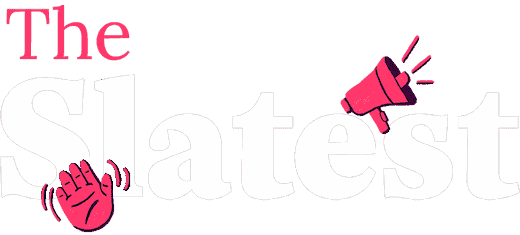Trump Is Dismantling Domestic Violence Nonprofits by Banning Certain Words

Sign up for the Slatest to get the most insightful analysis, criticism, and advice out there, delivered to your inbox daily.
Earlier this month, the Department of Justice quietly released a revised set of guidelines for Office on Violence Against Women grants. There was no press conference. No sweeping policy announcement. Just an update on the federal grants portal and a ripple of confusion through nonprofit inboxes across the country.
At first glance, the changes might look technical—bureaucratic even. Revised language, updated compliance sections, a handful of new funding priorities. But beneath the surface, the shift is profound. Because for many of the frontline organizations that support survivors of domestic and sexual violence, the new rules don't just change how you talk about the work. They change whether you're allowed to do it at all.
Under the new guidance, programs can no longer use federal funds to describe domestic violence as a systemic issue. Any activity that frames abuse through the lens of inequality, identity, or structural harm is now potentially disqualifying. Phrases like “gender identity,” “community justice,” or “trauma-informed care” are flagged as ideological. Organizations are warned against “inculcating or promoting gender ideology.” Funding now prioritizes trafficking prevention, immigration enforcement, and law enforcement collaboration.
That might sound like a shift in emphasis. But on the ground, it's something else: a quiet rewriting of what counts as valid care.
Survivors don't show up with problems sorted into neat program categories. They show up in motion—often in crisis—and carrying far more than what the word violence can hold.
One survivor might be a trans teenager who ran from home after weeks of escalating threats. Another might be a mother navigating eviction, a missed paycheck, and a custody battle all at once. Someone else might be an elder facing abuse from a family member in a rural area with no nearby shelter. The patterns are not hypothetical. They are seen daily by advocates, case managers, and legal aid staff across the country.
And in each case, violence is rarely the only thing someone is surviving.
That's why, over the past decade, the most effective nonprofit programs have expanded beyond a crisis-only model. They've linked housing support to legal aid, connected mental health care with economic stability, and designed services to meet people where they are—in language, in geography, in experience. They've built systems out of necessity, not ideology. Because healing doesn't happen on a tight timeline. It happens in layers.
But under the new guidance, this kind of work is increasingly hard to fund—because it's hard to describe without using the very language now considered off-limits.
If your organization serves Black women navigating domestic violence alongside the long shadow of housing discrimination, you now have to write around that. If you serve trans youth fleeing abuse, you can't name them. If your program exists because survivors in your region distrust law enforcement, you're expected to build partnerships with law enforcement anyway—or risk losing points in the grant review.
This all places the burden on nonprofits to translate their missions into a vocabulary that doesn't quite describe what they do.
A housing organization working with survivors recently described their program as “a trauma-informed intervention for culturally specific populations at risk of displacement.” That language would have been welcomed, even encouraged, in past funding cycles. Now, it could trigger rejection. But stripping it back to “a housing program for domestic violence victims” erases the precision, the history, the why.
We are left with a dangerous paradox: The more accurately an organization describes the full context of the violence its clients face, the more likely it is to be penalized for doing so.
Programs that serve survivors know this intimately: Violence does not begin or end with a phone call to a hotline. It is often the culmination of years of coercion, isolation, financial abuse, and fear. And it rarely happens in isolation from other systems.
When you operate a shelter that serves undocumented women, you don't get to opt out of immigration policy. When you offer counseling in rural areas, you can't ignore transit deserts or broadband gaps. When you provide support to survivors exiting incarceration, you are navigating reentry systems, probation restrictions, housing bans, and stigma.
To do this work effectively, organizations have had to build not just programs, but ecosystems of care.
And now, with the stroke of a pen and a shift in language, much of that work is being threatened.
The new rules push the field toward a narrow, criminal–legal model—one that emphasizes prosecution, compliance, and short-term safety plans. But that model has always left people out: survivors who don't report, who fear the police, who live in communities already under surveillance. Survivors who are housing-insecure, undocumented, queer, disabled, or carrying trauma that doesn't fit the official forms.
If we narrow the definition of who “counts” as a survivor, we narrow access to care. And if we refuse to name the structural forces that shape violence—poverty, racism, homophobia, displacement—we can't meaningfully prevent it.
We're left responding only to the aftermath, again and again.
In the months ahead, organizations will need support—not just financial, but strategic—to navigate these constraints. That means funders and intermediaries must step up to help document impact, translate narratives, and protect what's essential: the right of every survivor to be seen, supported, and safe.
Because when care becomes conditional on language, the work of healing doesn't just get harder. It gets smaller. And that is a cost we cannot afford to keep paying.
 Sign up for Slate's evening newsletter.
Sign up for Slate's evening newsletter.




